No one suspected an anarchist in the Class of ’65, not even me. With that revelation, I present my imperfect recollections and diary notations of our school days, a journey into the past with all the nonsense and trepidation that I took so seriously some sixty years ago.

Time to thank the senior class decorating committee for printing up the cougars that hung from the ceiling of the cafeteria for our post-graduation party.
School Days . . . ♬ When we were just a couple of kids ♬
I was five years old when I entered the school system in 1953 and with my classmates, would eventually become the Springfield High School Class of 1965. I was one of twelve children from the neighborhood of Woodview Farms, tucked between Woodland Avenue and Powell Road: Tacy, Marilyn, George, Donna, Rich, Dorothy, Joan, Linda, Bob, Walt, and Janice. Together, we would graduate twelve years later.
Attempting to Make Sense of Arbitrary Rules and Meritocratic Criteria
When we were kids, we walked to Central School, three blocks away, crossing at the light at Woodland Avenue and parading beneath the canopy of trees along Powell Road. Built in the 1920s, Central School, a gray stone building with oak doors and hallways lined with dark wood trim, stood squarely on the corner of the commercial center of Springfield.
We sat in rows of wooden desks with metal bases; we raised and lowered the lid on our desk to get to our books. A hole remained in the upper right corner for an inkwell bottle, left from another era. At the beginning of the year, the teacher distributed our supplies: eight colored crayons in a metal box, blunt-nosed scissors, a watercolor paint box, and a few pencils. We had several workbooks, one for math and one for reading.
In the back of each room, a door on either side led into a cloakroom, which also served as a convenient detention area for any student infringing on the rules. I remember standing in the closet for some infraction, long forgotten. I studied the coats on that rainy day, bright yellow slickers, and floppy hats hung neatly on hooks. Lunch boxes accompanied black galoshes with metal snaps, lined up under the coats. My lunch box did not have a thermos, as my parents were afraid it would break. I could buy milk, which came in little glass bottles, in the basement cafeteria.
Just across the street from the school on the second floor of the fire station, the Springfield Public Library housed their collection of books on metal shelving. My dad would drive my sister and me over to the library, and we selected carefully as a borrower could only check out three books at a time. I had a tendency to find my favorites and repeatedly take those out.
For my first grade placement, the school assigned me to Dorcas Symon’s class. Miss Symon, a bespectacled young woman with wavy red hair and fair complexion, had ancestral roots in Scotland, like my mom, Mary, who was born near Glasgow. If you approached Miss Symon with a complaint, she would gesture hand motions, gentle caresses of the cheek, to this Scottish poem:
Druids and Dragons
Blue eyes and Bloody Bones
Cock up the little ears
Under the treesies
Away with Ye!
At that point, she would gently push her charge away. The poem had the effect of calming the complainant, sent forth without being exactly sure what just happened. Bloody Bones is a boogeyman, and under the treesies is a reference to where one might find fairies. Faerie stories are interwoven in the folklore and legends of Scotland.
For a couple of years, I took ballet and tap dance classes held at the Old Central School, the small stone schoolhouse on Saxer Avenue. All the girls wore a black leotard, but Mom said that my zippered one-piece, white-and-green-stripped shorts would do. It was difficult, however, to feel like a ballerina without the proper attire, but I understood mom’s logic that my shorts would work for practice sessions. I had to make up my mind in the second year whether to take part in the culminating event, a recital based on Peter Pan, which also meant paying an extra fee. The dance instructor decided that she would play Peter Pan, and relegated me to the role of one of the lost boys. The idea that the instructor won the lead and managed the selection process struck me as being unfair. My level of dance skills did not cross my mind as being a mitigating factor. I decided not to continue with the lessons.
Needs Improvement: Report Cards
As unremarkable as they were, my parents saved my elementary report cards. I struggled with learning to read. It felt like an eternity that I wrestled with the Fun with Dick and Jane primers. The schools in the 1950s didn’t have diagnostic testing, and I now know I have dyslexic tendencies. In addition to reading difficulties, the unrelenting spelling tests affirmed my weakness in this superficial language skill every week.
On my first-grade report card, I notice that I received a “needs improvement” in “shares interesting experiences.” Ah, would Miss Symon be proud of me for sharing my “interesting experiences” on this blog, I wonder? I apparently “showed improvement” in “practices self-control” in the December evaluation. That fall I experienced a lapse in self-discipline: teachers called students in from recess, and I decided not to get in line to march back into the building. Playing on the swings seemed more in keeping with my self-interests than facing those Dick and Jane primers again.
In another playground incident, I glided down the sliding board, and with a splat, found myself sitting in the cold water of a large mud puddle. The teacher on recess duty sent me to the office, and the principal summoned my mother to bring dry underpants. As I waited for my mother to arrive, I remember feeling embarrassed having to explain to all who asked what I was doing in the office. The explanation would have been easier if I just had been “naughty.”
The township demolished Central School in 1978; a sports field now occupies the space, although, for me, the apparition of the building that shaped my childhood experiences still stands on that corner. The old school fostered strong attachments as former students have posted their photographs and memories on a Facebook page, Central School Alums.
Migration to Sabold School
Because of the housing boom, the district built Sabold School and assigned our neighborhood to the new school. Dorothy H. reported on the Woodview Farms blog that the students packed up their bags and marched from Central School to Sabold. Every room came equipped with a sink and bathroom, which meant no more hall passes, which gave students a temporary escape from the classroom, a benefit I appreciated in the old school. We each had our own cubby, and an open rack of hooks served as coat storage.
School officials arranged that the same class move as one unit through each grade. The children pictured in Mrs. Boyer’s class in the photograph below remained together from third to sixth grade. Mrs. Jassie taught us in third grade, Miss McKenna in fourth, and Mrs. Hoover in 5th.
School Culture: the Diversions
Classroom holiday parties at Halloween, Christmas, Valentine’s Day, and Easter served as a welcome break from the routines of reading, writing, and arithmetic. At least two homeroom mothers took on the responsibilities of decorations and refreshments, usually cupcakes, cookies, and red punch.
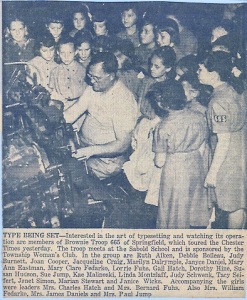
Brownie Troop 665 with Typesetter
Halloween was my favorite party. We donned our costumes, and paraded around the room; homeroom mothers awarded prizes for the best outfits. Many of us purchased commercial costumes, which came in lightweight cardboard boxes with windows that showed a view of the outfit. These factory-made costumes–devils, skeletons, witches, princesses, and cowboys–competed with the homemade variety, such as a tattered white sheet with a couple of holes or a decorated paper bag. In fourth grade, my mom volunteered as a homeroom mother that year, and she suggested that I dress up as Little Orphan Annie and recite the poem by James Whitcomb Riley. Mom’s Celtic roots, played a part in this decision, as telling stories of ghosts and goblins are Hallow Eve’s traditions in Scotland. I wore an old-fashioned dress with apron and black stockings and carried a little broom. The poem imprinted a social message I long remembered:
An’ churish them ‘at loves you, an’ dry the orphant’s tear,
An’ he’p the pore an’ needy ones ‘at clusters all about,
Er the Gobble-uns’ll git you
Ef you
Don’t
Watch
Out!
In December, each classroom displayed a decorated tree, and every year we made those green and red paper chains, gluing the strips together with a white paste that dried and stuck to fingers. Traditionally, students gathered in the cafeteria to watch “The Spirit of Christmas,” the Bell Telephone film featuring marionettes depicting the Night before Christmas and the Nativity story.
Every morning class started with a reading from the Bible, the Our Father prayer, the Pledge of Allegiance and the National Anthem or other patriotic songs. In grades 5 and 6, we each took a turn reading the Bible, but we could select the passage. These routines seemed to calm the class, as students transitioned from the chaos of arriving at school and settling down to sit and learn. In sixth grade, one of my friends told me that her Catholic friend refused to recite the last line of the Our Father because the Douay-Rheims Bible excluded those lines. I felt uncomfortable being required to pray in school, and because someone objected to a part of the exercises, that validated my discomfort. To my relief, in 1963 the Supreme Court struck down mandatory school prayers.
Two recesses divided the school day; one was 15 minutes during mid-morning and another after lunch. Boys played baseball and tag football in the fields, and girls skipped rope, reciting rhymes, jumping in cadence with the turning rope. . .
Teddy bear, teddy bear, turn around,
Teddy bear, teddy bear, touch the ground,
Teddy bear, teddy bear, go upstairs,
Teddy bear, teddy bear, say your prayers,
Teddy bear, teddy bear, switch off the light,
Teddy bear, teddy bear, say goodnight,
In sixth grade, we danced on the playground, singing songs, and following the steps of the popular circle dances. Sometimes recess proved challenging with arguments, teasing, and roughhousing to negotiate. To escape the schoolyard dramas, I would defy the rules against leaving the school boundaries and wander up to the small woods that followed the chain link fence beyond the playground. I enjoyed playing in any woodsy area, where I might poke under rocks and study the wildflowers. The Blue Church, the oldest standing church in Springfield, occupied a neighboring corner of the school property, and again, ignoring the rules, I would survey the old gravestones, looking at the names and dates and wonder how the residents came to rest there.
We experienced a dark side of the 1950s, as the Cold War mentality and fears permeated into the schools. Periodically, the school conducted air raid drills as a perceived method of protection against nuclear attack. Teachers directed students to quietly move to a windowless area, kneel on the floor and cover our heads. These drills had little significance to me, as I didn’t believe there was a real danger, or maybe it was just unimaginable.
6th Grade with Mrs. Boyer
Mrs. Boyer taught through storytelling, sharing with us tales about her life and experiences, and by reading stories. I devoted a blog post to her story-telling, especially when she read Winnie-the-Pooh to the class. I found excuses to stay after school and just hang around her classroom.
One afternoon, Linda Heffie and I offered to clean the large closets, where disorganized art supplies spilled out of the shelves and on the floor. Afterward, Mrs. Boyer drove us to her home and treated us to dinner. Linda’s heart defect limited her physical activity, but we still found plenty to do, and she included me in several Campfire Girl outings. Linda was a member of the safety patrol, which commanded status in the elementary set. Safeties, who escorted younger children across street corners, wore white belts with a badge across the chest and had lateness privileges.
Linda, pictured in the first row on the left, did not graduate with our class; she collapsed in the school hallway in the spring of 1962. My dad drove me to her viewing, and as I stood in line, I could see Linda in the coffin. She wore a lovely pink dress. Wearing fancy dresses was reserved for happy occasions, like parties or dances, but this was not the case, and I could not contain an outburst of tears. I turned away and rushed out the door. When I returned home and Dad related the story to Mom; she scolded me, saying that the viewing was not the proper time for a show of emotion, but rather my responsibility was to convey condolences to her family. I felt ashamed I could not carry out the appropriate response, and I mourned the lost opportunity. Mom’s comment must have been born out of the British stiff upper lip mentality. In an episode of Downton Abbey, the Dowager Countess compares a show of emotion with a lack of compassion: “My dear, a lack of compassion can be as vulgar as an excess of tears.”
Linda lived on Granite Terrace, just off Thompson Avenue, and I never thought I would return to her home.
You walk into this room at your own risk, because it leads to the future. Not a future that will be but one that might be. This is not a new world. It is simply an extension of what began in the old one.
Rod Serling, Twilight Zone, The Obsolete Man
My daughter, Mae, attended Sabold, and her best friend, Amanda, lived on Granite Terrace . . . and when I drove Mae to Amanda’s house the first time, I realized it had been Linda’s home.
The sixth-grade curriculum required that all students complete a research paper, and we devoted our energies to this project during the last few months of the year. Mrs. Boyer informed us that passing this paper would be our ticket to promotion to junior high school, so I came to believe that much was at stake, and I’d better apply myself to the task.
Mrs. Boyer instructed us on writing outlines, assembling a bibliography, and making illustrations. We could select any country in South America for our topic. My dad helped me write to the Venezuelan embassy in Washington for materials. Mrs. Boyer handed back our papers, mine with the comment, “It was a good report,” thus assuring my promotion, although I felt let down that for all that work, I didn’t receive an “A”.
Summer Camp: Nik-O-Mahs
Walter Hall, a social studies teacher at the high school, and his family operated Camp Nik-O-Mahs in the Allegheny Mountains. Many Springfield students attended the camp, and Joan and I shared a cabin for a week or two. In this blog post, I wrote a narrative of camp life accompanied by several photographs from that time. I returned to Nik-O-Mahs in October 2014 to see if the camp had remained as I remembered it.
Dreading Junior High School
Unlike most of my peers, I was not happy about transitioning to junior high school. I could see what started as one report in sixth grade would now continue into an endless line of research papers. On October 4, 1957, the Soviet Union successfully launched Sputnik I, an event that spurred an increased emphasis on higher academic standards and advanced courses. School authorities arranged students into sections according to our perceived abilities and past performance. Springfield schools were very competitive, and the administration placed continual emphasis on making the honor and distinguished honor roll, awarding certificates during assemblies. Teachers recorded our grades on report cards as numbers. We had to earn an 83 or above in every subject to be honor roll worthy, which I achieved once, leaving me with a lone silver star on the certificate. Often I missed the honor roll by just a point or two. Even then, I believed that publishing the honor roll invaded my privacy by letting the entire community know my grades were not up to par.
Another objection I had to junior high: the curriculum demanded that girls enroll in home economics. I felt pigeonholed into domestic servitude, and I imagined that making wood projects in the shop class would be more interesting. I complained to mom, asking why the school forbids girls from taking shop courses but received no sympathy. My home economic skills proved wanting. Once in cooking class, I mixed up the ingredients, and the teacher had to toss the food project into the bin. I remember the exasperated look on the teacher’s face as she tried to rescue the recipe. In sewing class, the teacher assigned making an apron. I had no ambitions toward ever wearing an apron, so the exercise seemed pointless. Mom tried to help me with the stitching, and in the end, I think I got a C+. In the comment section of my seventh-grade report card, several times the teacher noted, “Does not make full use of abilities.” Ironically, later in my life, I sewed many projects but no aprons.
I did not understand why the authorities forced us to take showers after gym class, which seemed to make no sense. It wasn’t as if we could soap up and get clean. We had to get undressed, dash under the water, run through slimy, slippery floors to the monitor, who checked off our compliance, all of which took time away from our gym time. Some girls figured a number of strategies, such as sprinkling water on shoulders, to pass the shower test. Somehow, the required shower was tied to our grade, but I don’t remember how.
My friends in the eighth grade warned me that Mrs. Conver, the art teacher, graded everyone with a C-. Sure enough, that’s what showed up on my report card, except once when I received a C. I just assumed Mrs. Conver forgot the minus. Even if the grade was less than inspiring, I still enjoyed doing the art.
 In 7th grade, I met one of my best friends, Cindy Loughran, who had recently moved into Springfield. As we were sitting in Mr. Gallagher’s homeroom waiting for opening exercises on the first day of junior high, I must have looked very serious, contemplating the complexities of my new situation. Cindy asked, “Are you meditating?”
In 7th grade, I met one of my best friends, Cindy Loughran, who had recently moved into Springfield. As we were sitting in Mr. Gallagher’s homeroom waiting for opening exercises on the first day of junior high, I must have looked very serious, contemplating the complexities of my new situation. Cindy asked, “Are you meditating?”
Cindy’s father worked for State Farm Insurance so her family moved around the country, and in tenth grade, she left for Illinois and eventually moved to California. For years, we exchanged presents for birthdays, and I saved her letters. The post office returned my last letter to her with “deceased” stamped on the envelope. I thought it had to be a mistake as I could not believe that at only 48, she could be gone. I called her church, and the secretary told me that Cindy had died suddenly of an asthma attack. I felt such a loss as we could always be absolutely honest with each other, with no pretenses or pride, just genuine friendship.
The photograph was taken at Sabold School; some of the girls in our 7-6 class: Cindy on the far left, Janet, Linda, Wendy, Sue, Nancy.
Marching to a Different Drummer, Continued
To have the privilege of playing in the band or orchestra in elementary school, students were required to pass a music test. I did not pass, but my sister, Jean ’68, did pass the test, and she brought home a flute. I took an immediate liking to the instrument and began practicing. In eighth grade, I requested to join the marching band, and the guidance counselor changed my schedule to a music section, where classes were organized around orchestra and band classes. I’ll never forget the first band practice–a wall of music surrounded us when we struck that opening measure. I had circumvented the official mechanism of band membership through the music test that predestined students to a music track, and I felt vulnerable that I would not measure up to the abilities of the other flutists. The question lingered whether my placement in the music program was permanent. My probation ended on November 7, 1960; I wrote in my diary, “Today I found out that I was in the band for good!” For the next four years, music became central to my high school experience.
The band performed at all the home football games, and if we won, we marched around town, through Saxer Avenue, and up Powell Road, to proclaim our victory. The competition did not just exist on the football field. We received the greatest pleasure in making fun of the other bands that performed to support their teams. We’d gossip how the other band’s uniforms and hats were funny looking and their formations misaligned. I remember the phrase “marching maggots” but uncertain whether the expression applied to us or to the other guys.
In front of Martel’s Supermarket
In the fall of 1960, the Junior High Band was dispatched to the Springfield Shopping Center, where the candidate for president, Vice-President Richard Nixon, greeted the crowd. When John Kennedy came through Delaware Country, he did not stop in Springfield but rather spoke at the Lawrence Park Shopping Center in Broomall. I wondered how Springfield politics played into the decision-making as to whether the band would play for a candidate or not.
 The presidential election of 1960 dominated our discussions in civics class. Our teacher assigned us one of those research reports, where we would pick a candidate and document his background, the party platforms, and history. The debates in class often centered on John Kennedy’s religion, Roman Catholic, since a Catholic had never been president. I remember that Tim was one of Kennedy’s strongest advocates. My mom and dad, two of a handful of Democrats in Springfield, supported Kennedy, but my parents were pragmatic when it came to expressing political opinions in school. My teacher supported Nixon, but after some consideration, I decided to write about Kennedy. I told my folks I’d mediate my enthusiasm by making a cover that showed both candidates. Report grade: C, but in fairness to the teacher, my sections on party platforms were skimpy.
The presidential election of 1960 dominated our discussions in civics class. Our teacher assigned us one of those research reports, where we would pick a candidate and document his background, the party platforms, and history. The debates in class often centered on John Kennedy’s religion, Roman Catholic, since a Catholic had never been president. I remember that Tim was one of Kennedy’s strongest advocates. My mom and dad, two of a handful of Democrats in Springfield, supported Kennedy, but my parents were pragmatic when it came to expressing political opinions in school. My teacher supported Nixon, but after some consideration, I decided to write about Kennedy. I told my folks I’d mediate my enthusiasm by making a cover that showed both candidates. Report grade: C, but in fairness to the teacher, my sections on party platforms were skimpy.
Ninth grade brought more academic challenges. Grades in Latin went steadily down and the number of unsatisfactory comments went steadily up. I spent hours on the translations but had little retention of the vocabulary. Tradition mandated that girls take yet another home economics course, and I experienced a serious slump in the second report period with a slew of unsatisfactory comments and a D grade. We had to write reports, too, with proper illustrations and cover page.
English with Mr. LeFever saved me from grade oblivion. Harry, a gentle teacher who everyone liked, gave his students good doses of encouragement. The Class of ’64 dedicated the yearbook to him, saying, “Mr. LeFever stresses and encourages individual thought rather than the inculcation of facts.” I enrolled in a creative writing course because he was teaching the class.
Scenes from Senior High
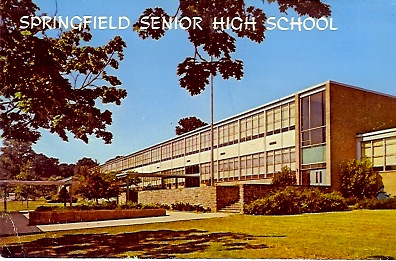
Class Structure
Students could choose one of the four tracks: college preparatory, commercial, vocational, and general. Within the college preparatory curriculum, students were further divided by the upper-level math and science courses. I occupied a space in two of these curriculums, taking the academic courses while also enrolled in Shorthand I and II. The school had to juggle the schedule because typically students could not be enrolled in two tracts at once. This finagling was all due to my mom, who strongly believed in higher education but who also felt that coming out of high school without skills was impractical, if not foolish. The girls in my shorthand class picked up the skill quickly, but for me, shorthand was a difficult endeavor. I liked drawing the little characters but could not write them fast enough during dictation. To supplement my business courses, I enrolled in a summer course in typing and achieved an astounding speed of ten words a minute. Ironically, I graduated from college with a business teacher certification. The only advantage of my lack of prowess in these courses is that I understood the difficulty students might have learned these skills and geared my teaching to implementing an easy systematic skill-building process. I wrote a typing book because the textbooks moved through the skill levels too fast for students to master the keyboard efficiently.
Friendships and cliques often formed along these class lines. For example, boys in the higher-level math and science classes rarely wore black motorbike jackets, as the leather look seemed reserved for the boys in the vocational track, who would take on a rebellious “James Dean” look. Many of the girls in the commercial courses favored short skirts and “bubble” hairdos. Other students preferred the preppy look, as evident in the photograph on the inside cover of the 1965 Scrivener. I found myself somewhere between these two fashion worlds, college prep and vocational, attempting to resist conformity with a purchase of a pleather jacket because the leather jacket was too expensive.
Infernal Locker Malfunctions
Musical Interludes
Thanks to Mr. DelNegro, our musical director, students loved the band and orchestra. With infinite patience and kindness, he inspired his budding musicians to pursue their music abilities. Many students went on to the district and state performances. When Mr. D conducted the dance band, the music seemed to flow from his baton, as he marked the beat. We liked the music he selected for our concerts: “Poet and Peasant,” “Bugler’s Holiday,” “Victory at Sea,” “Holiday for Winds,” show tunes, and, of course, a Sousa march or two. Almost every year he selected “Salute to P. M. E.A.”, the official march of the Pennsylvania Music Educators Association, as the second piece in the band concert.
I didn’t realize how much time Mr. D. devoted to the music program–which included football games, concerts, parades, and assemblies. With forty students in the orchestra and a hundred in the band, he efficiently managed his classes. It wasn’t until I became a teacher that I could appreciate the effort he invested in the programs. The spring concert culminated with the vocal groups and orchestra performing the “Battle Hymn of the Republic.” After the concert, my dad would say the hymn brought tears to his eyes, he was so moved by the music.
If you played in the orchestra, who could ever forget our favorite theme, “Temptation.” A popular hit from the 1930s, Mr. DelNegro used the music as a vamp, a repetition that synchronized with the students filing into their assigned seats for assembly until everyone settled and the program ready to begin. Orchestra members joked about how often we played the number, but the music was easy and we played it well.
Every December, the choruses and orchestra would present the Christmas Candlelight Service. The members of the chorus, carrying battery-lite candles, would file into the auditorium singing “O Come All Ye Faithful.” The orchestra and chorus played and sang together, including the recessional, “Joy to the World.” Rich has posted the “Hallelujah Chorus” from the album he saved from the 1964 concert on the class Facebook page: Springfield High School Delco Class of 1965.
Junior Class Trip
 The Class of ’65, headed by bus to Annapolis, Maryland. What I remember most was the boat ride. For some reason, chaos ensued and folding chairs were thrown into the river. Thus ended any further travel opportunities for our class. Hmmm, maybe Winnie the Pooh wore off. For some reason, I only have one picture from the day, my friend Dorothy, checking out a cannon.
The Class of ’65, headed by bus to Annapolis, Maryland. What I remember most was the boat ride. For some reason, chaos ensued and folding chairs were thrown into the river. Thus ended any further travel opportunities for our class. Hmmm, maybe Winnie the Pooh wore off. For some reason, I only have one picture from the day, my friend Dorothy, checking out a cannon.
Mining Miscellaneous Memories
- Bermuda Day: My favorite because for one day out of the year, the school allowed us to wear shorts. Since elementary school, I questioned why girls had to wear dresses or skirts, as I believed slacks would be more comfortable and practical. Even on this special day, shorts could not be too short, and a problem immediately surfaced over an inch of fabric. The school administration considered Jamaica shorts too short. Students complained to guidance counselors that it was difficult to find the longer Bermuda-length shorts, but their pleas for leniency on length were ignored and legions of girls were sent home to change. The other controversy involved wearing sandals, and what color socks to wear or whether to wear any socks at all. I noted in my diary, May 27, 1965, that the principal announced over the intercom that students would not be allowed to wear sandals to school. Outraged, I noted on the page that Skip protested with the comment, “Beethoven had long hair, and Christ wore sandals!” Sometimes boys would be sent home if their hair was too long, even touching their collar.
- Mr. Stephens’ Physics Class: Mr. Stephens, with his low-key and serious demeanor, would call on students to answer questions then place a mark in his grade book. I dreaded when Mr. Stephens called my name because I usually didn’t know the correct answer. On the last day, the class sang, “For He’s a Jolly Good Fellow,” and with a restrained smile, Mr. Stephens let us finish the song.
- Beatles: Awe-struck best describes my reaction on seeing the Beatles for the first time on “The Jack Parr Show” during a wintry evening in January 1964. Carrying my physics book, a newspaper photographer snapped my picture as I squeezed through the crowd to buy concert tickets. The next day the photograph appeared on the front page of the Philadelphia Bulletin. I was somewhat embarrassed about this infatuation with the Beatles, as I had been very much trying to become an intellectual, but I remained a steadfast fan. In the end, I felt vindicated, given that the Beatle’s music and legacy endured, their rebellious spirit encouraging young people to image beyond the box. In this post, I describe the time my mom met me outside my algebra class to give me a letter from Peter Best (the fifth Beatle). The clip below is from the Beatle concert in Philadelphia. We had a seat in the back, but we didn’t stay there long. We rushed through the isles to the front as soon as the Beatles appeared on stage.
- Rumble in Chemistry Class: Two entries in my yearbook, Joe, “Our chemistry class sure was wild,” and Ed, “always remember chemistry class” reminded me that more was going on in Mrs. DePaul’s chemistry class than poring over the periodic table. In one incident, we were taking our seats at the beginning of class. This particular day I wore textured stockings with faux alligator shoes. For some reason, it struck the guys as being absolutely hilarious! Joking and pushing ensued and then a scuffle broke out. Mrs. DePaul sent three or four boys to Mr. Gartside’s office. Sorry, Skip.
- President Kennedy’s Assassination. Most of us can never forget exactly where we were when we heard the news that President Kennedy had been assassinated. At about 2 p.m. on November 22, 1963, I sat in Mr. Stephens’ class when the announcement came over the intercom. I remember my friends and I cried all the way home that day. When we returned to physics class after the funeral of President Kennedy, Ken told us that he had traveled to Washington to see his President.
Senior Class Trip, Fall 1964:
Problematic Proms–Reality vs. Fantasy
Junior Prom: Subjected to the Disney princess myth with movies such as Snow White and Sleeping Beauty, I imagined the prom offering a fairy tale gala in a magical backdrop with all the attending accouterments, the gown, the corsage, oh, and the handsome prince who would spin me around the dance floor like Cinderella at the ball. And, like Cinderella, I envisioned that I would make a transformation–from the scholarly schoolgirl into a sophisticated woman. Unfortunately, no invitations were forthcoming, and I absolutely refused to ask anyone to escort me. My girlfriends, who also had not been asked to the prom, planned a roller skating party, defying a night sitting home wondering what could have been. I could not get into the skating mood and instead opted to stay home and mope.
Senior Prom: Months ahead of the senior prom and determined to avoid a repeat of last year, I formed a strategy for getting a date. Still refusing to do any asking, I convinced my mom to intercede and have her ask her good friend if her son, Bob, could escort me. The moms made the arrangements. With the “prince” safely secured, the next step–shopping for the perfect dress. I selected a gown that had a slit up the back. Mom didn’t like the split for some unknown reason and promptly sewed it up. I didn’t care. I was going to the prom. Bob and I eventually talked on the phone, and I inquired about the plans to attend the after-prom dance. The prom would last until midnight and the senior class organized an after-prom breakfast at 1a.m. Bob expressed no interest in attending that event, which left me with another dilemma: who wants to call it quits at midnight? . . . my carriage turning into a pumpkin far too soon. I hatched another plan. In the previous weeks, I dated Joe, a boy I met at the Holy Cross dances. Joe agreed to go to the after-prom, although his parents were less enthusiastic about him heading out to a dance at one o’clock in the morning.
On the evening of the prom, Bob arrived at the door carrying a white orchid. Bob, polite and soft-spoken, wore a white tuxedo jacket and black bow tie and looked very much the part of the handsome prince with his dark hair and eyes and strong chin. We drove to the Benjamin Franklin Hotel in downtown Philadelphia. An elegant lobby and grand staircase presented my Disneyesque entrance to the ballroom. We stood on the balcony for a few minutes watching the dancers float across the floor. For what seemed like an instant, we arrived, danced and then departed. As we drove back to Springfield, “It’s Over” played on the radio, Roy Orbinson’s heartfelt and emotional lament swallowing the silence in the car.
Tender nights before they fly
And falling stars that seem to cry . . . .
It’s over.
Years of prom expectations melted away with the realization that there is no such thing as a magical night of someone else’s creation. I now faced the anti-climatic after-prom.
When I returned home, I changed into my after-prom dress, a soft pink short gown with a full skirt, and many petticoats. Dad and I picked up Joe at his house and drove to the Fireside Inn. As I walked on the dance floor, one of my classmates declared, “I see you’ve changed more than your dress!” That remark underscored the foolishness of the entire escapade.
Baccalaureate and Graduation: Nights to Remember
Nobody was more surprised than me that the evenings of baccalaureate and graduation became joyous occasions, mostly because the stars lined me up with classmates who were also in a rebellious mood. By the luck of height compatibility, I was paired with Bill Chandler for the procession, and he and his buddies entertained us with their humor and lively repartee. I suppose we were expected to display a certain degree of restrained decorum, suitable for the occasions, but we were already somewhere else. On the back of the Baccalaureate program, I wrote,
How can I ever forget the wonderful time I had tonight. Actually, I didn’t even want to attend, but mom told me to go. The rehearsal was a riot. I had a terrific partner who couldn’t be serious for a minute.
 And my notes on the Commencement Program,
And my notes on the Commencement Program,
For two days, we rehearsed outside, marching in and out in good order. Then the night of graduation, it rains. The next day it was still raining so they had to hold Commencement in the auditorium. That night the class of 1965 gathered for the last time. I will always remember this night because we had a blast! Bill and his friends kept Dorothy and I laughing all evening. We were seated in the back rows, so no one was paying much attention to us. We were passing around candy, Cokes and sandwiches, and someone started to blow bubbles during one of the speeches. When the last person received their diploma, all the graduates started to stamp their feet and wave their hats. I loved every minute!
 The principal, Mr. Smith, tried to calm us down, giving us the “shush” sign from behind a curtain, which only created further hysterics. Mustering restraint and dignity proved impossible. After this night, we would be heading out into unknown territories, so how could we possibly contain our enthusiasm and energy celebrating the moment that everything in our lives would change. For an instant, we could let go of high school and the future.
The principal, Mr. Smith, tried to calm us down, giving us the “shush” sign from behind a curtain, which only created further hysterics. Mustering restraint and dignity proved impossible. After this night, we would be heading out into unknown territories, so how could we possibly contain our enthusiasm and energy celebrating the moment that everything in our lives would change. For an instant, we could let go of high school and the future.
In seven years Bill would be lost, a casualty of the Viet Nam War, and leaving behind a wife and two daughters. Many years later I made a pilgrimage to the Viet Nam Veterans Memorial in Washington, and I found Bill’s name on the wall. I thought about graduation night, and how we laughed and joked in the back rows of the procession.
On Memorial Day 2019, the Springfield American Legion Post 227 honored Bill in a ceremony at the Township Building. Legion members compiled Bill’s life history honoring his legacy.
How does it feel
To be on your own
With no direction home
Like a complete unknown
Like a rolling stone?
Bob Dylan, “Like a Rolling Stone”
June 16, 1965
That summer I headed off to college at Shippensburg, a small state school in central Pennsylvania. The summer session offered few activities or events, so I focused on my studies, spending hours in my third-floor dorm room as the hot stillness of July heat covered the campus. Some weekends I went home and returned on the bus carrying my suitcase through the empty sidewalks of the main street, crossing the railroad tracks, and walking up the hill to Old Main. I was doing what I was supposed to do: start my education for a career in teaching. School days at Springfield fell into deep corners of memory.
Reflections 2015: Fifty Years after Graduation
Whatever happened to . . . ?
Isn’t finding out what happened to our classmates what we would like to know? So, what happened to me? Tom wrote in my yearbook, “To the girl whose math class I’ve been in since 10th grade, but never knew you were there because you were so quiet.” From my early years in school, I wanted to speak up against oppressive and arbitrary rules but lacked the knowledge, wisdom, and confidence to discuss or write about these concerns. Politics and power dynamics fascinated me, especially how the underdog might succeed. In high school, I kept diaries of world news. In the 1960s, I attended political events for John Logue, a Villanova political science professor from Swarthmore who ran as the Democratic candidate for Congress. The 7th Congressional District had not elected a Democrat since the Civil War, so John Logue faced an uphill battle for the seat. He succeeded in bringing the public’s attention to gerrymandering issues in the district.
Barry McGuire’s “Eve of Destruction,” released the summer of ’65, resonated with me for bringing attention to issues of race, injustice, and war that mainstream politicians ignored.
Then take a look around to Selma Alabama
You’re old enough to kill
but not for voting.
I can’t twist the truth, it knows no regulation.
Handful of senators don’t pass legislation
And marches alone can’t bring integration
― P. F. Sloan
I believed my generation could take on these issues. In 1971, the state legislatures finally ratified the 26th Amendment and signed into law dropping the minimum voting age to 18. In the spring before graduation, the Selma Voting Rights Movement held three marches, and these protests eventually led to the Voting Rights Act, a landmark event in the Civil Rights Movement. As the 50th year class reunion approaches, the recent release of the movie, Selma, replays the drama in the spring of 1965 when Martin Luther King and other civil rights leaders crusaded for voting rights, reminds me, again, that we can rouse people to action in support of social justice causes.
In 1976, I campaigned with Bob Edgar and finally saw the era of the War Board come to an end in Springfield. What I eventually realized was that racial and worker solidarity provides the mechanisms for voice and participation. I became involved in progressive social actions including the Swarthmore College Living Wage and Democracy Campaign. With shared leadership in our organization, we won a wage increase for the lowest-paid workers at the College.
I a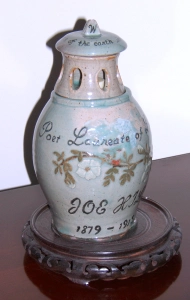 lways was an anarcho-syndicalist, a term that had no place in the lexicon of civics education fifty years ago. Anarcho-syndicalism resists exploitation and domination by advocating for non-hierarchical systems of coöperation by working together to become a responsive community. As I was growing up, I had some good ideas, but few mechanisms existed to help me to act on issues that I believed were important. Educating children to become self-aware and to understand the benefits of solidarity and mutual-caring benefits society by promoting creativity and peaceful change.
lways was an anarcho-syndicalist, a term that had no place in the lexicon of civics education fifty years ago. Anarcho-syndicalism resists exploitation and domination by advocating for non-hierarchical systems of coöperation by working together to become a responsive community. As I was growing up, I had some good ideas, but few mechanisms existed to help me to act on issues that I believed were important. Educating children to become self-aware and to understand the benefits of solidarity and mutual-caring benefits society by promoting creativity and peaceful change.
For many years, Philadelphia served as the headquarters of the Industrial Workers of the World, a syndicalist union; I felt honored that IWW members asked to make an urn for Joe Hill‘s ashes. Joe Hill was an American labor icon, songwriter, and member of the IWW.
High school days now seem rather quaint, and all that was important during those years has faded into a haze of nostalgic remembrances. Four hundred and twenty-five teenagers headed out into the world on June 15, fifty years ago, each living their own compelling story of life’s triumphs and tragedies. Everyone will have their legacy, which cannot be measured by material accomplishments, for we cannot know what ripples have been left in the human condition by our presence on earth.

Class of 1965, I welcome all contributions to the memory bank in the comment section or to the links.
Links
50th Reunion, Class of 1965
Springfield HS Class of ’65, Musical Tribute, Robert Fischer
Daydreams and Diaries, Taylor Black, Memoir of Tim Black’s daughter; Chapter 29, Viet Nam Memorial, William G. Chandler
SHS Class of ’65 Gathers for 45th Reunion
Springfield Delco HS Music 1960’s & 70’s
Delaware County History.com
Springfield High School Delco Class of 1965 Facebook
Briarhill Road, Springfield: Looking Back
Classmates Web Pages
sometomato’s studio: Kate Mortimer
Projects, Music, Fiction, Poetry, and Art: Gary Tapp
Epilogue
Connecting through Facebook
Before the reunion, classmates reconnected through the Facebook page. When I posted this blog page on the 1965 SHS Facebook page, classmates wrote heartfelt comments about the blog, which came totally unexpected but so greatly appreciated as it took me months to decide whether to even publish what I had written.
A comment written by Nancy, who lived in Cindy Loughran’s Church Street neighborhood, was particularly touching. Nancy still had the marinade recipe for chicken on the grill that Cindy’s father had given her parents many years ago. Nancy replied that she will bring the recipe with her to the reunion and said, “Cindy will be in the house!”
Susan and I reminisced about our days in kindergarten at St. Mathew Lutheran Church in Mrs. Timmons’ class. I remembered that Mrs. T. would perform these miraculous magic tricks, producing a new puzzle out of thin air. Of course, we had to close our eyes and put our heads down on the desk as she did the magic. Those puzzles established my first anxieties around school performance–I could only put together the simple puzzles and avoided those with small pieces to fit together. On the last day of kindergarten, we wore caps and gowns, and I didn’t understand why I couldn’t keep the outfit. Susan recalled that a naughty chair occupied a space in the room and was assigned the spot for talking during quiet times.
My friend, Dorothy, and I spent two hours catching up on the phone. It was as if we were talking the day after graduation; the years in between didn’t seem to matter.
The Class of ’65 was fortunate to have a dedicated planning committee, who met for over a year to put together the plan for the weekend events: Dotti Hine Callahan, Jean Moss Clemons, Andy Costanzo, Rich Detskas, Maryann Eastman Eisenhart, Deb Frazer, Nancy Kassebohm Hable, Jackie Masson Hefelfinger, Tom Hibberd, Betty Levens Martin, Bob Moore, Randy Ribecca, Frank Souder, Lucia Valz, Wendy Walker Hibberd.
The Reunion, Weekend of October 16, 2015, “Come Together”
The reunion dinner was held at the Springfield Country Club, starting with a reception. The organizing committee welcomed classmates, giving us a senior picture lanier and a CD with our collective histories since graduation. When I walked into the Fairway Ballroom, I was amazed that the room was filled, with just over 180 members of the class and partners!
Blue and gold balloons and pumpkin centerpieces decorated the tables. I wandered around, taking pictures, and talking with classmates. We have changed a bit over the years so most of us had to check each other’s senior class pictures.
I stopped at the table where the names and pictures of our friends who have passed were displayed and wondered about their stories. I grew up in the same neighborhood at Linda Mintzlaff, and our families were friends. I thought about Skip, and the crazy times we had in Mrs. DePaul’s chemistry class.
Other classmates who have passed: Susan Fisher, Barbara Bloodwell, Mary Mascher, Walter Reiffer, and Robert Smith. The display created by Maryann, Dotti, and Bob.
When the DJ played Sleepwalk, a wave of nostalgia came over me. Music from the 60s always has the effect of transporting me back to that time, not just in memory but in feeling. Sleepwalk became the inspiration for this short video, which includes several scenes from around the high school. I had to return to the music rooms one last time, as so many of my memories of high school centered around the music program, and it may come to pass that our school, as we remember it, will fall under the wrecking ball. Why is it that the spaces always look smaller when you return?
 My friend, Dorothy, arrived in time to catch a late dinner, and we had a long hug when we saw each other for the first time after so many years. We talked, we danced, we celebrated–finally being together! Dorothy and her husband, Aron, are a sweet couple, and I enjoyed every minute with them.
My friend, Dorothy, arrived in time to catch a late dinner, and we had a long hug when we saw each other for the first time after so many years. We talked, we danced, we celebrated–finally being together! Dorothy and her husband, Aron, are a sweet couple, and I enjoyed every minute with them.
I had great conversations with political soul mates, Susan, Kate and Gary. I had recently written a blog post on Solidarity, and now I have that with these rekindled friendships.
At the band and orchestra luncheon on Saturday, the committee arranged for our former teachers to be present: Joe Cannon, Sharon Taylor, Luca DelNegro, Dale Fry, Mary LeFever, Joe and Judy Salatino, Dick and Betty Shoemaker.
How wonderful to talk with Mr. DelNegro once again, who was such a dedicated and patient teacher and instrumental leader. Mr. D still participates in a musical group.
 Also attending the luncheon was Mary LeFever, wife of our beloved English teacher, Harry LeFever. Jean reported on Facebook that 22 class members requested a copy of Harry’s collection of poems, Call Me Ishmael, Still and that as a result, donations totaled over $500 to the Springfield Area Education Foundation. I treasure my copy of Harry’s poems and that I had a chance to express my appreciation to Mary. Mr. LeFever was an encouraging teacher, and I was inspired by his creative writing class. He may just responsible for my writing this blog.
Also attending the luncheon was Mary LeFever, wife of our beloved English teacher, Harry LeFever. Jean reported on Facebook that 22 class members requested a copy of Harry’s collection of poems, Call Me Ishmael, Still and that as a result, donations totaled over $500 to the Springfield Area Education Foundation. I treasure my copy of Harry’s poems and that I had a chance to express my appreciation to Mary. Mr. LeFever was an encouraging teacher, and I was inspired by his creative writing class. He may just responsible for my writing this blog.
Many thanks to our committee members for making these visits possible.
Celebration at the Riddle Ale House
Members of the class had another chance to catch up on Saturday evening. What great fun, again, and more opportunities to talk with those who I missed at the other events. Later in the evening, the band, FuseBox, played Beatles’ music providing one more chance to connect to our musical roots.
Hundreds of pictures of the reunion are posted on Facebook, thanks to members of the class, especially Walter and George’s sister, Liz.
Gary gifted our class with a lovely poem, Reunion (October 2015), that best captures our transformation from 1965. Gary wrote an original song entitled, “Reunion (Class of ’65) which he recorded on his website. Yes, “We slow dance in a long-long dream.”
The weekend exceeded my expectations in every respect. What a joy to “come together” once again.
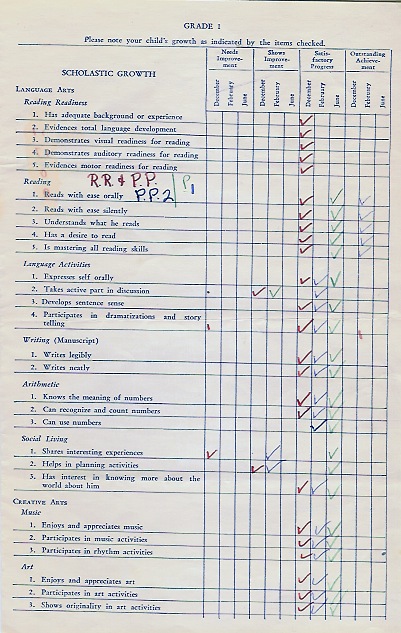


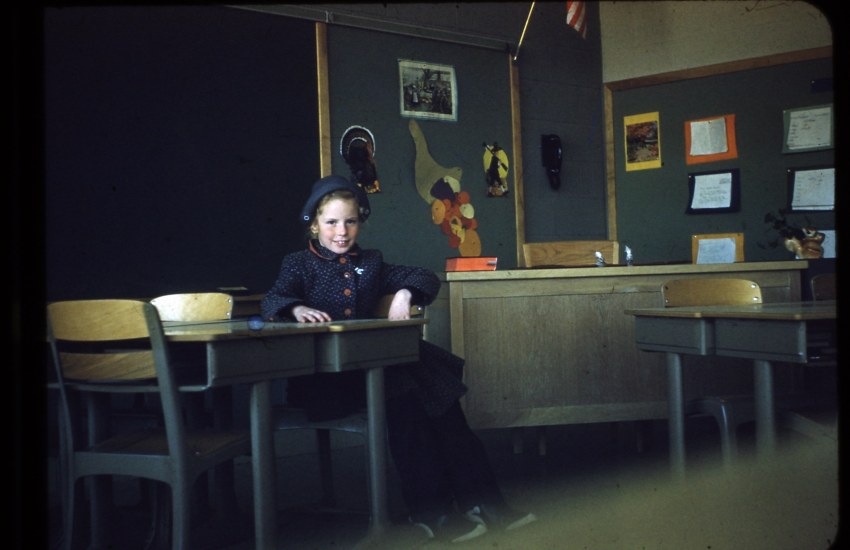


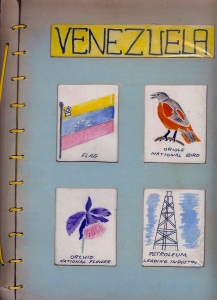
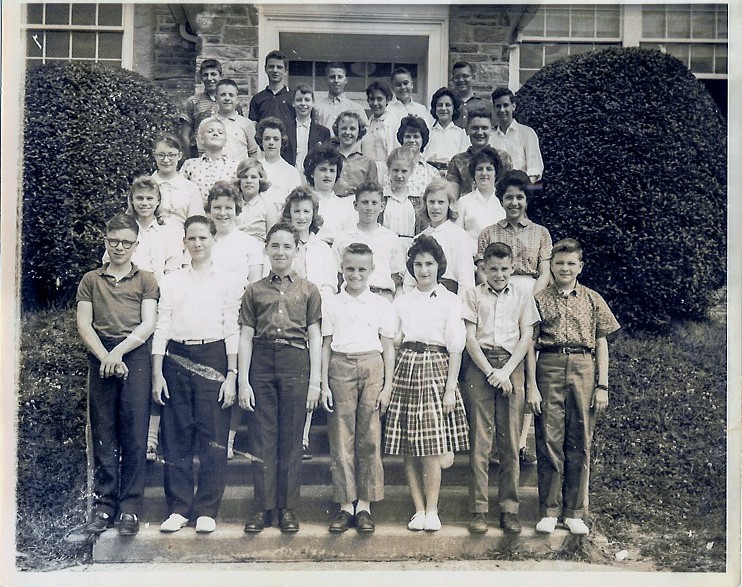

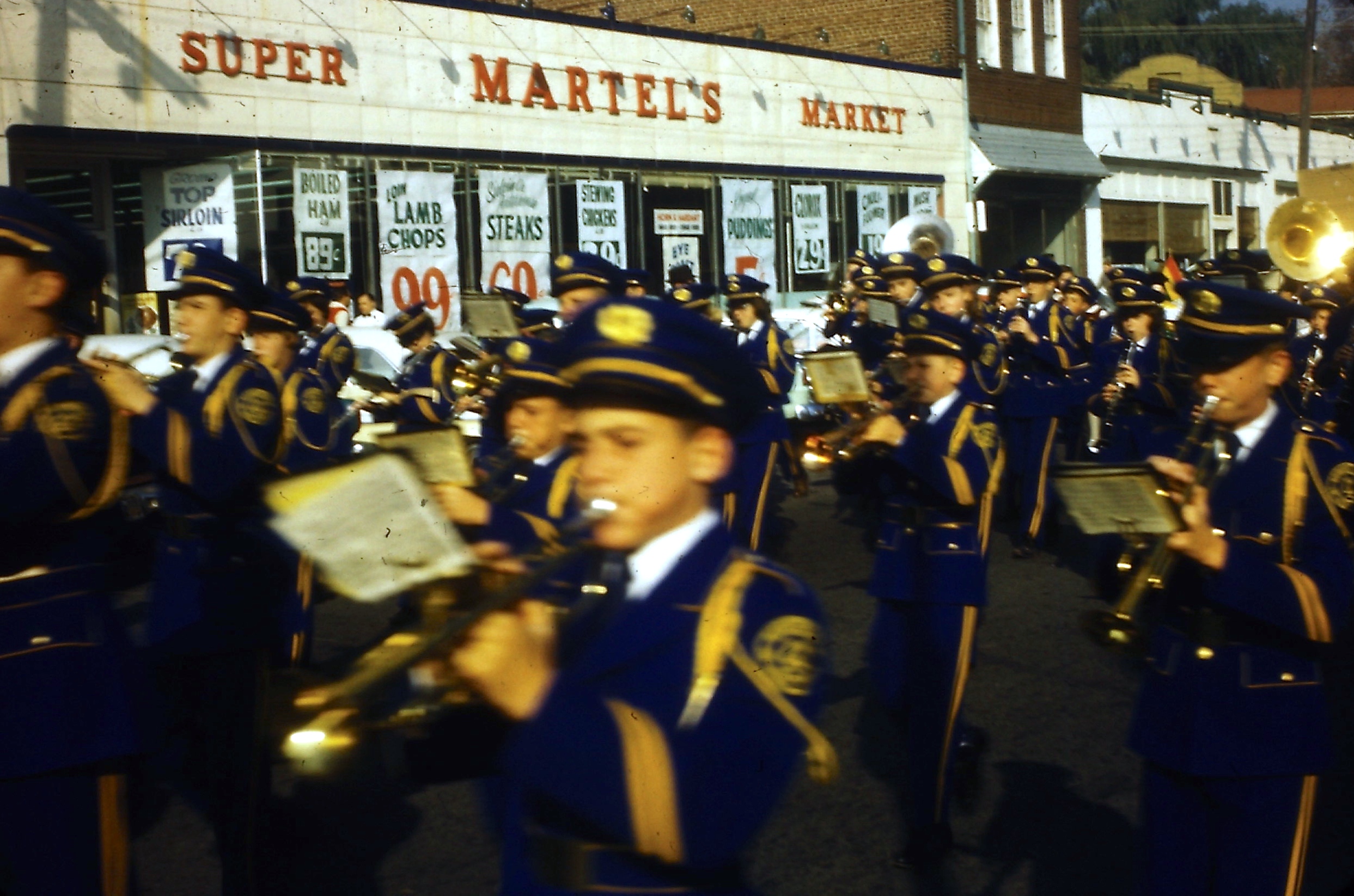
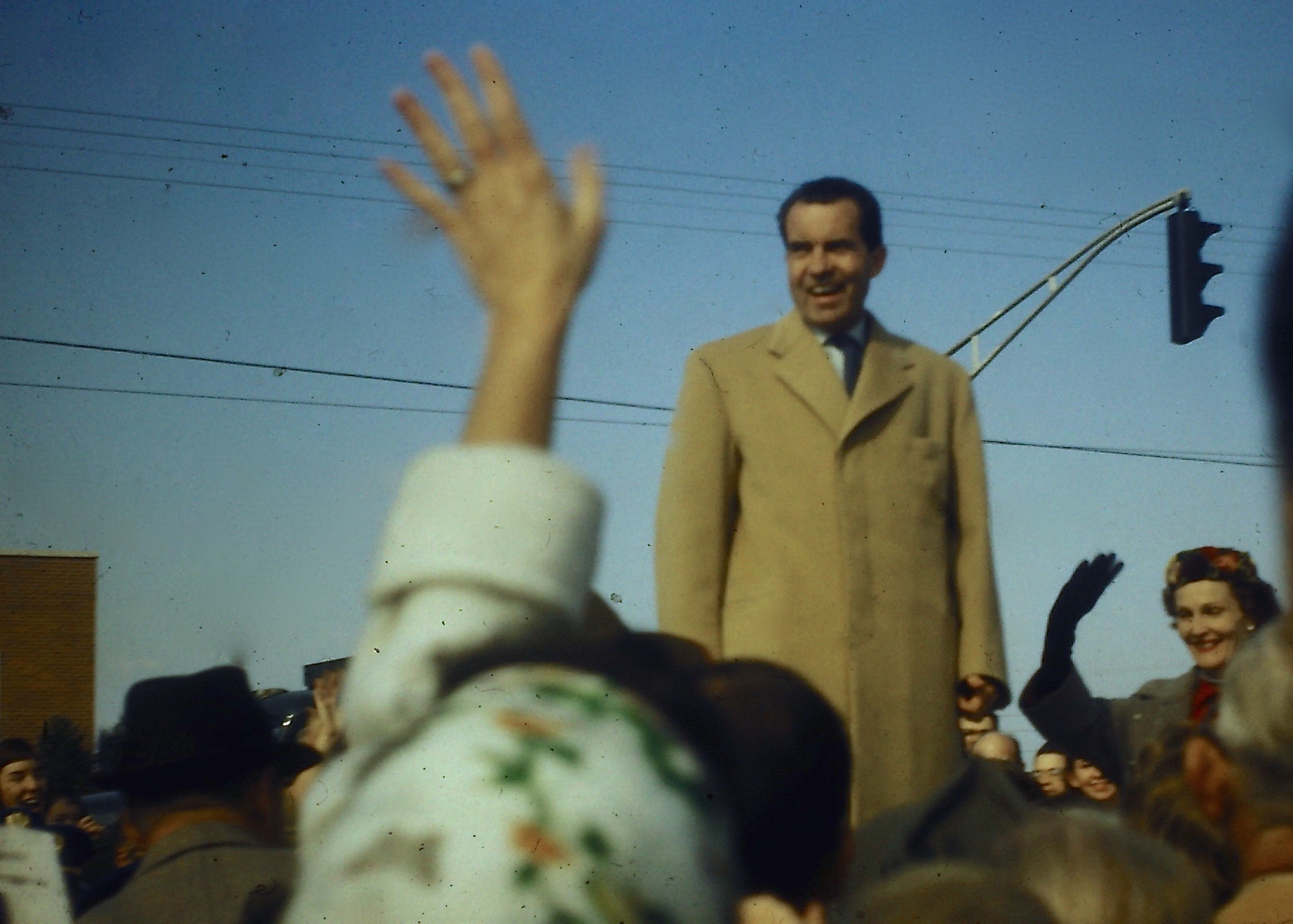
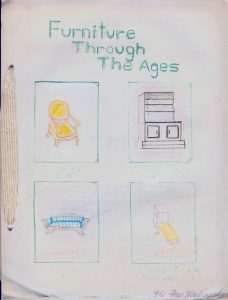
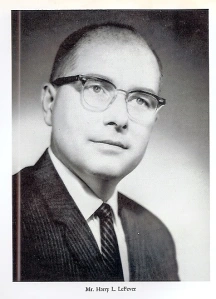

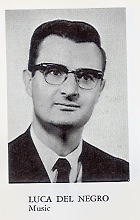








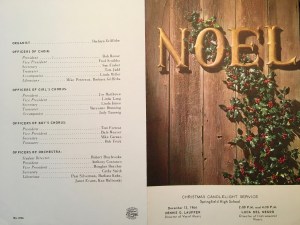
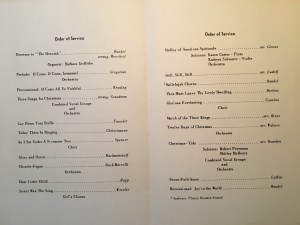

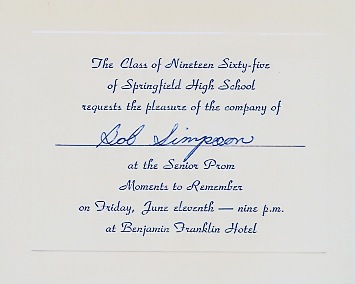



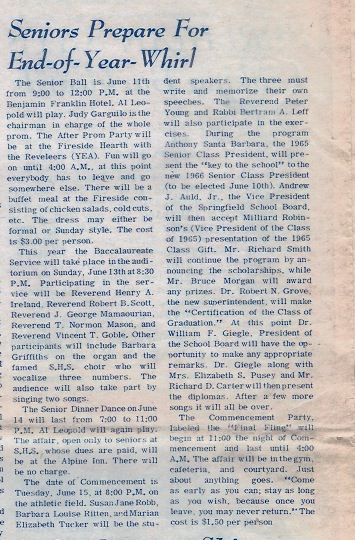




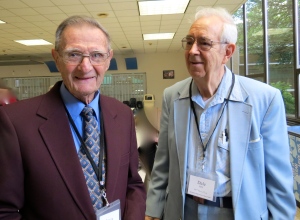

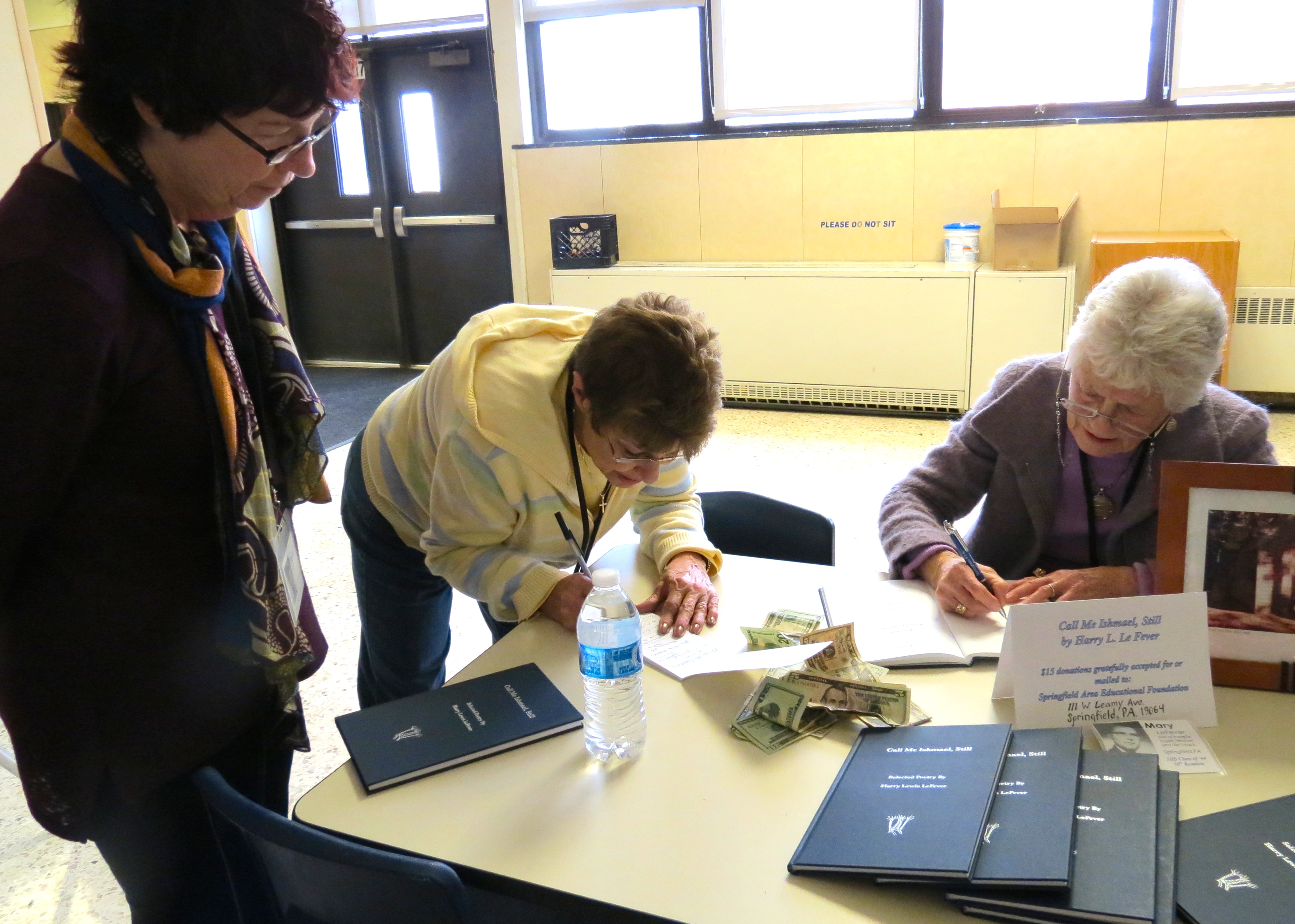
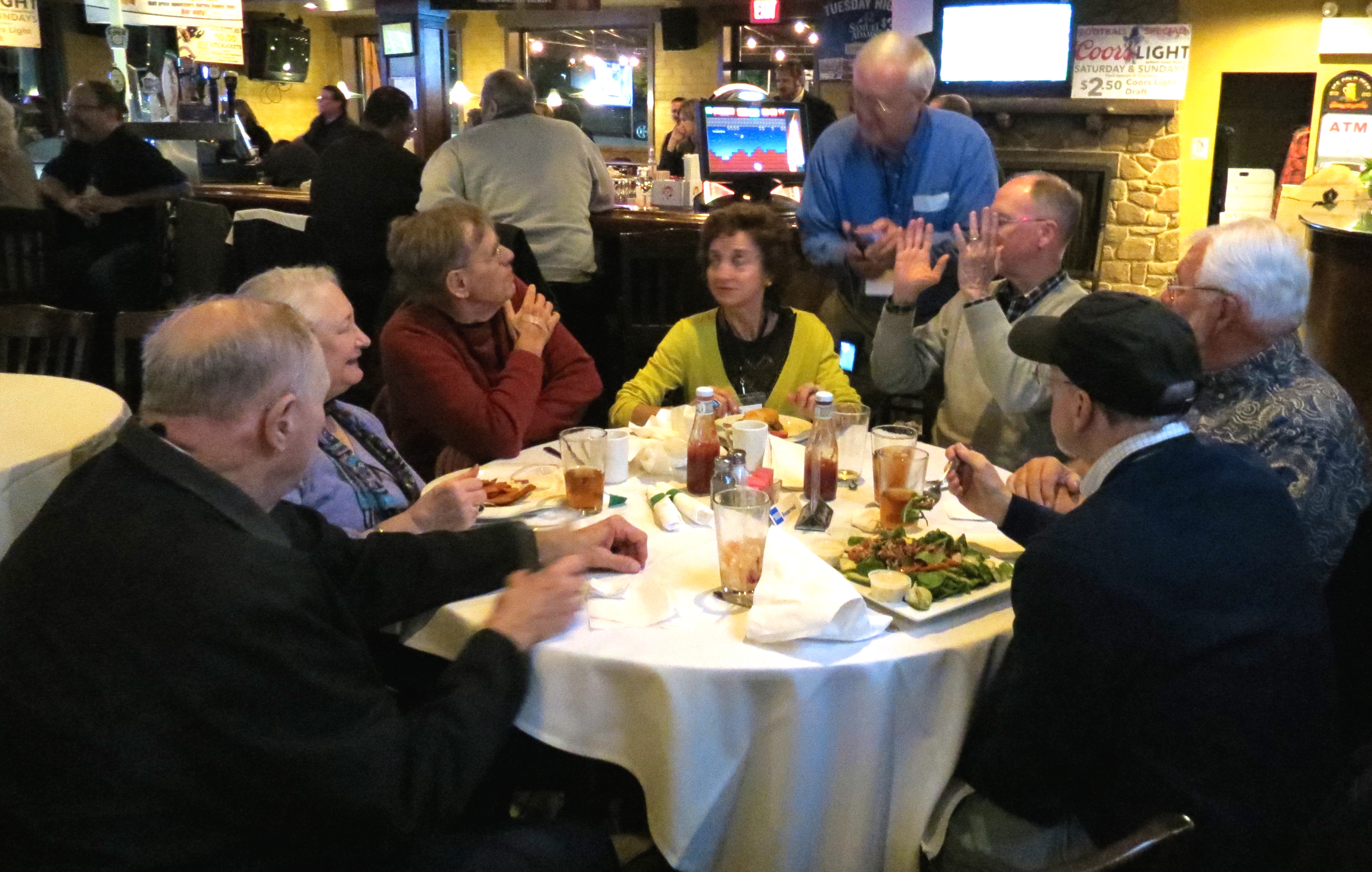



Comments on: "Springfield HS Class of 1965, Remembrances & Reflections" (38)
[…] School Days (Link to Springfield Class of 1965) […]
LikeLike
I got a lot of smiles from this. Know why? I could have written it! I started in ’59, though. I, too graduated with the same kids I went to kindergarten with. School is so different now. I wouldn’t want my kids to go to public these days and mimic the social graces and mostly respect that isn’t taught anymore. And forget the art and music! My son’s wife Homeschools their two and another 16 year old granddaughter has asked to go to computer school at home because the bullying is severe. I also wanted to mention that my 6th grade teacher was Mr Boyd (close). I left home to go to college as a music major and never looked back. I spent many years playing professionally and teaching ( all of the music files on my blog are my improvisations) I returned to my home state almost 5 years ago for medical reasons and started looking up HS kids wondering if they’d remember me I. had changed my name decades ago and went back and put my old name beside it. I’ve been Sonni Quick for 42 years. Resurrecting Deby Fritz was painful! Our next reunion is in 2 years. I think that will be fun to go to. One last thing. When I look at classrooms from ‘back then’, amazing the absence of lots of fat kids?
LikeLiked by 2 people
Hi Sonni, thanks for sharing your story. My nephew and his wife homeschooled their daughter this year. I wish the schools would put more energy into curbing the bullying. I do have connections to Pottstown; John Kalwaic was a business teacher in the district until the 1970s. Still have friends there. Regarding your music, I like “Understanding,” very soothing.
LikeLike
Thank you! Did your friend teach at the HS? I went to Pottstown High. The problem with bullying starts in the home. So many parents don’t teach the importance of respect -to anyone – and teachers have no option of discipline without getting into trouble. How then do these kids grow and know how to discipline their own kids? Sad cycle
LikeLiked by 1 person
Yes, he taught at Pottstown HS.
LikeLike
Do you live in Pa? I see references to Philly. If so I grew up near there. Pottstown. Home of Mrs Smiths pies and Kiwi shoe polish. Our claim to fame!
LikeLiked by 1 person
Is that you and Dotty Krauss-Eisenpress in the picture of graduation?
LikeLiked by 2 people
Yep, that’s us. Dorothy is in the picture with cannon, too.
LikeLike
Kae, I remember you so well! I attended the 45th reunion, the first time I had returned to Springfield since I left in 1967 to move to NM. Life became a great deal different for me when I started at Penn after graduation from SHS, and even more different when I moved 3000 miles away from home. I went through much of the same social and political awakening that you refer to in your blog, and was convinced for many years that if I did go back to Springfield I would not have anything in common with fellow graduates any more. I think I felt that no one else was changing as much as I had changed!
What a surprise to find five years ago that others, too, had “awakened”, had expanded their consciousness – and furthermore, that we actually had MORE in common with each other than previously! Over the last five years, quite a few of us have communicated via email and Facebook, occasionally meeting in real life, and have developed deeper understanding of each other as adults. We also have found that way back in school, each of us was not alone after all. Many of us were going through the same rebellions and questioning, although it often seemed as each of us was quite alone.
Isn’t it also interesting how many of our class became teachers?
I hope you attend the 50th reunion. I would love to see you in person and renew our connection.
Kate (Kathy Schwartz) Mortimer
LikeLiked by 2 people
Kate, I remember we were in the orchestra together, you played the violin, right? When I wrote this blog, I had no idea how fellow classmates would respond, and I’ve been so excited to learn that many of us went through transformations. During high school years, we didn’t have much political agency . . . except our protestations about whether we could wear sandals. I’m so glad that you’ve shared your thoughts and that many of us in the Class of 65 actually have so much in common. Will be wonderful to meet again and share our memories and experiences since graduation. We’ll have to talk art, too. Can’t wait! Kae
LikeLiked by 1 person
WOW what a wonderful commentary, Kae! I have so many memories as you do, but you added some great ones. Hope you will be able to attend the 50th in October. All the best to you.
LikeLiked by 2 people
Rich, thanks for stopping by the blog and for your kind comments. I thought my experiences were unique, but the more I talk to classmates, seems we shared many of the same sentiments and memories! Will be at the reunion and will see you there, for sure.
LikeLike
I love the honesty with which you wrote, Kae. I think that’s what made your blog especially riveting and readable. I’m in great admiration of your strength of character in your early years. I feel it took me many more years before I got to that point in my life. I love that we now again have this opportunity to know each other as the adults we’ve become, all the while having these shared early experiences! This was indeed a joy to read!
LikeLiked by 2 people
Susan, your heartfelt response means so much. Took me months to write the story and then months to have the courage to post it to the Facebook page. I never would have believed that I might once again connect to high school friends in such an encouraging and reassuring way. Looking forward to many future conversations.
LikeLike
Fantastic post. I remember the desks with the inkwells. The photographs are beautiful.
LikeLiked by 2 people
Thanks! Something very sweet about those wooden desks.
LikeLike
This was a lovely gift to find here on your blog, as I am still on a ‘reunion high’, never wanting to come back down! Thank you Kae for this and for finding me again after all these years… I’m thrilled beyond words for our rekindled friendship!
LikeLiked by 1 person
Susan, the reunion weekend was a gift of new memories. How wonderful to reconnect after all these years! Love, K
LikeLike
Being in your first grade class,your description was accurate and heartfelt. It made me cry. I have mostly wonderful memories of Central school and the beautiful friends that it housed. Looking at the reunion pictures. I could see the older faces of my friends I left behind when we moved to Haverford in seventh grade. What a wonderful idea luck life we lived in those days. Free to roam our neighborhood without fear. Your bog is wonderful. Thank you.
LikeLiked by 2 people
Dear Gail, what lovely sentiments . . when I read your comments, all seems right in the world that we share such endearing memories of our school days. K
LikeLike
Kate (Kathy Schwartz) I found this site by accident and don’t know if you follow it or not, but if you do contact me…..Bob Braybrooks braybrooksr@yahoo.com
LikeLiked by 3 people
Hi Bob, I’ve forwarded your note to Kate. Thx for following my blog. Kae
LikeLike
You’re welcome Kae. It was very interesting and brought back a lot of memories, especially that picture of our 7th grade class. I don’t know about that “jolly good fellow” Dean Stevens part either….I don’t think I took part in that singing. I would love to have attended the 50th reunion but I have lived in Panama for the past 5 years and returned to the US 2 months ago for a short visit missing the reunion by just a few weeks. Maybe the next one. Thanks for passing my note along to Kathy.
LikeLiked by 2 people
The picture of our jr. high class has all of our signatures on the back.I have such fond memories of that class. Panama is a long way from Springfield! Well, the reunion was such a grand success, I believe a five year reunion will happen. Maybe we’ll see you then. : ) Also, a band-playing reunion is in the works. Dust off that trombone!
LikeLike
Your photos and text struck many, almost too many similar chords, we could have been in the same schools–myself a midwesterner from Detroit and Chicago. I don’t think there was anything wrong with our USA education in public schools post-WW2, 1950-1964, do you? 🙂
LikeLiked by 2 people
I guess the school experiences of American teenagers during that era were similar, perhaps a formulaic aspect to education during that time. We certainly were taught the fundamentals. In my high school, the emphasis was on doing reports of all kinds, which was good practice for college. We also had to read 4 or 5 selected novels over summer vacations. Competition to get good grades sometimes felt fierce, and could sometimes make a student feel they were not measuring up. Reflecting back, I think our teachers presented the material well, but there wasn’t much discussion or encouragement to express diverse views. I like approaches today that teach students how to think. I took a college course on art history, for example, and the professor emphasized how to think about art rather than memorizing paintings and styles. Well, I could go on and on . . . Thx for the question! K
LikeLike
So, I did the drills, suffered the poor grades, the doubts–but graduated from USA high school and USA college. Then about the third job into real life after college, I learned that high school records did not mean anything. I had been taught and learned from grades 1-12, math, reading and writing that has made application to any job anywhere in the world possible. That’s why I value those years 1950-64. 🙂
LikeLiked by 1 person
Right, those basic skills certainly were necessary, if only I didn’t worry so much about my academic performance at the time. I guess there is a life-lesson there.
LikeLiked by 1 person
[…] this past October, our high school class held their reunion, and I was able to connect with my friends from Springfield. My best friend, Dorothy and her […]
LikeLiked by 1 person
Wow..I hope that future historians can use your memories.
That little Scottish rhyme your 3rd (?) grade teacher used would get her in so much trouble today. It was a lovely way to disarm a childhood snit but parents are pushy about a lot of frivolous things these days. Helicopter parenting is what they call it I guess…Disney is OK but God forbid a teacher talk lightly of Druids and bloody bones that will cause nightmares and devil worship.
It is slap awesome you got to see the Beatles.
LikeLiked by 2 people
DL, Today political correctness does us in, as everyone struggles not to offend. I feel we’re entitled to bit of whimsey even if that involves some bloody bones.
Most adults back then thought the Beatles would be a flash in the pan, but we knew better ; ). Thx for commenting. K
LikeLike
That is touching and familiar; you’re making a very good print on humanity indeed. Thanks Kae.
LikeLiked by 2 people
Keith, sincerely appreciate your kind comments. I get sentimental myself when I return to this page. Kae
LikeLiked by 1 person
My name is John C. Shedlock, I was in Central School is Miss Tills Class. Does anybody have any old pic’s or yearbooks?
LikeLiked by 1 person
Have you seen the Facebook Page for Central School? https://www.facebook.com/groups/44921177251/ Several people mentioned being in Miss Tills class.
LikeLike
I tried to but have received no response, I even have picture’s of Miss Tills class around 1970-71. Does anyone know anyone in that group? Lol, I remember they took us all into watch “Lord of The Flys” at Central School, the old black and white version. I always wondered why they did that. My name is John Christopher Shedlock
LikeLike
Thanks for the memories, Kae! I enjoyed your reflections and beautifully written prose on our school days back in the 50’s and 60’s in good old Springfield. I joined you at Sabold in the 5th and 6th grades and Mrs. Hoover and Mrs. Boyer had a
profound impact on me and made me want to become a better student. I too, was disappointed to receive a grade of B
on my term paper on a selected country in South America. And I do remember the woods and fence on the playground bordering the Blue Church. There was rumor there was an atom smasher in one of those buildings on the other side of the fence and it made me happy to know that the U.S. was keeping up with Russia in their scientific development!
Your blog took me on a magic carpet ride from those wonderful years in Springfield through to college. I went to Bloomsburg where I met my husband who was, incidentally, from Shippensburg. And yes, I too became a teacher/guidance counselor, inspired, without a doubt, from our many outstanding teachers in Springfield. Mr. LeFever would be proud of you!
LikeLiked by 1 person
Hi Judy, There you are standing next to me in that 6th-grade picture and now writing back to me after all these years! Thanks for stopping by and for your thoughtful comments about the blog. The mysterious brick building behind the fence at Sabold is long gone, replaced by a chain grocery store. Mrs. Boyer was an inspirational teacher. Was nice to hear about how she influenced your career in teaching. And interesting how we share the connection to Shippensburg.
Hope to see you at the next reunion! Warm regards, K
LikeLike